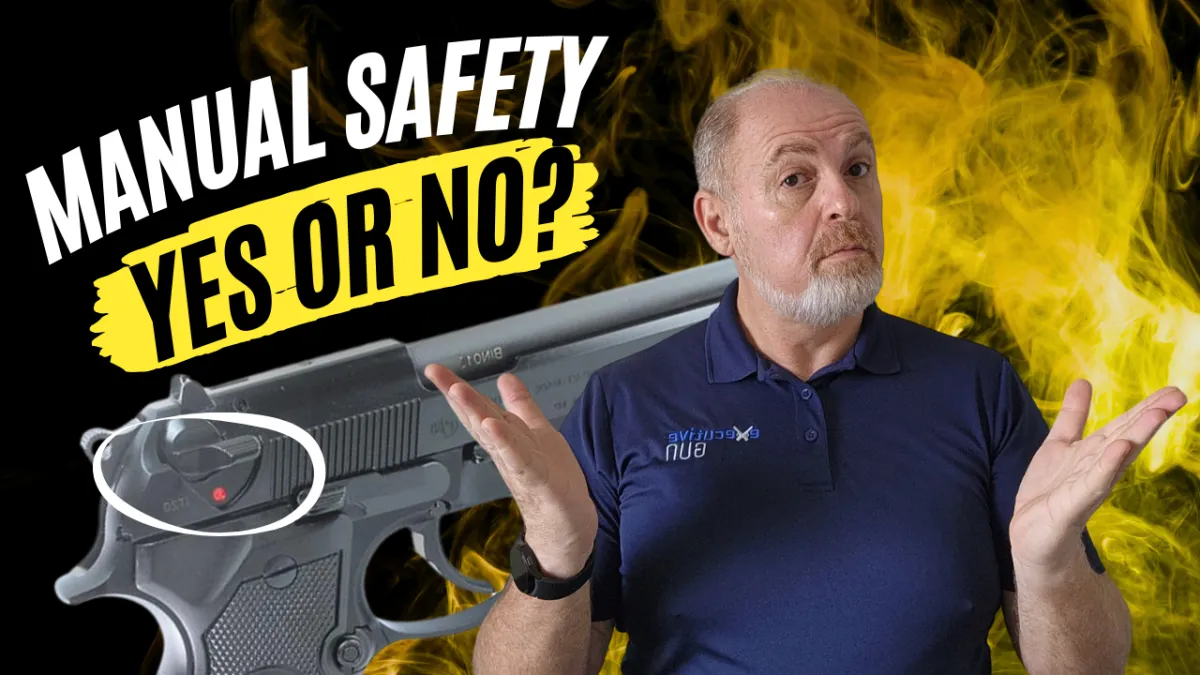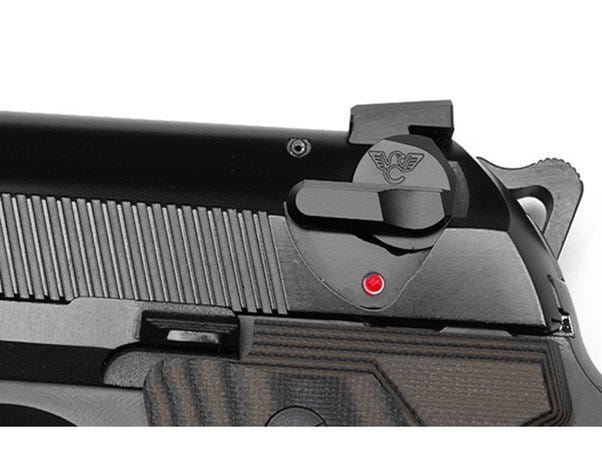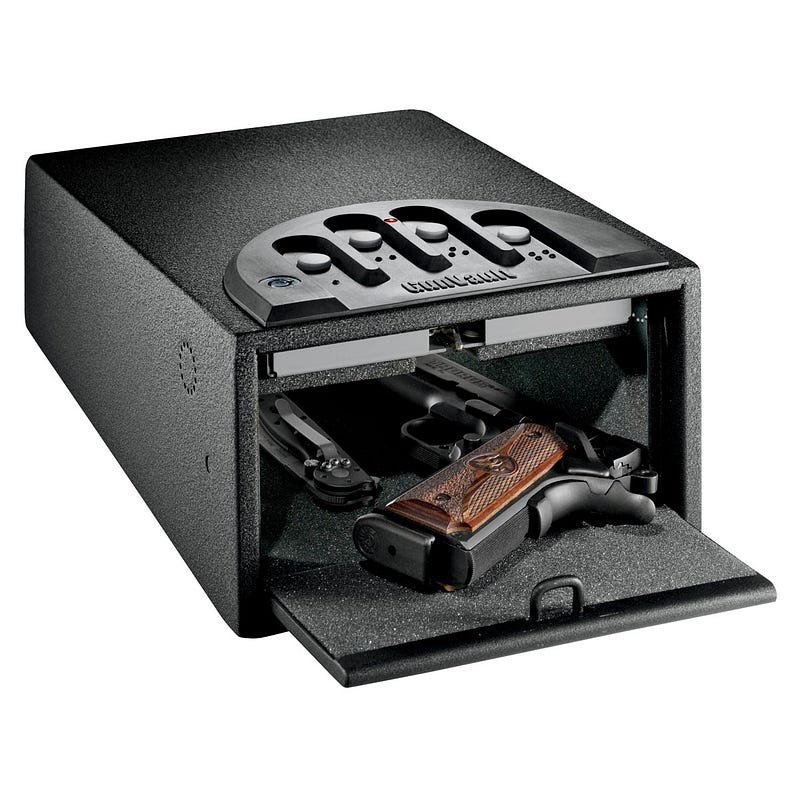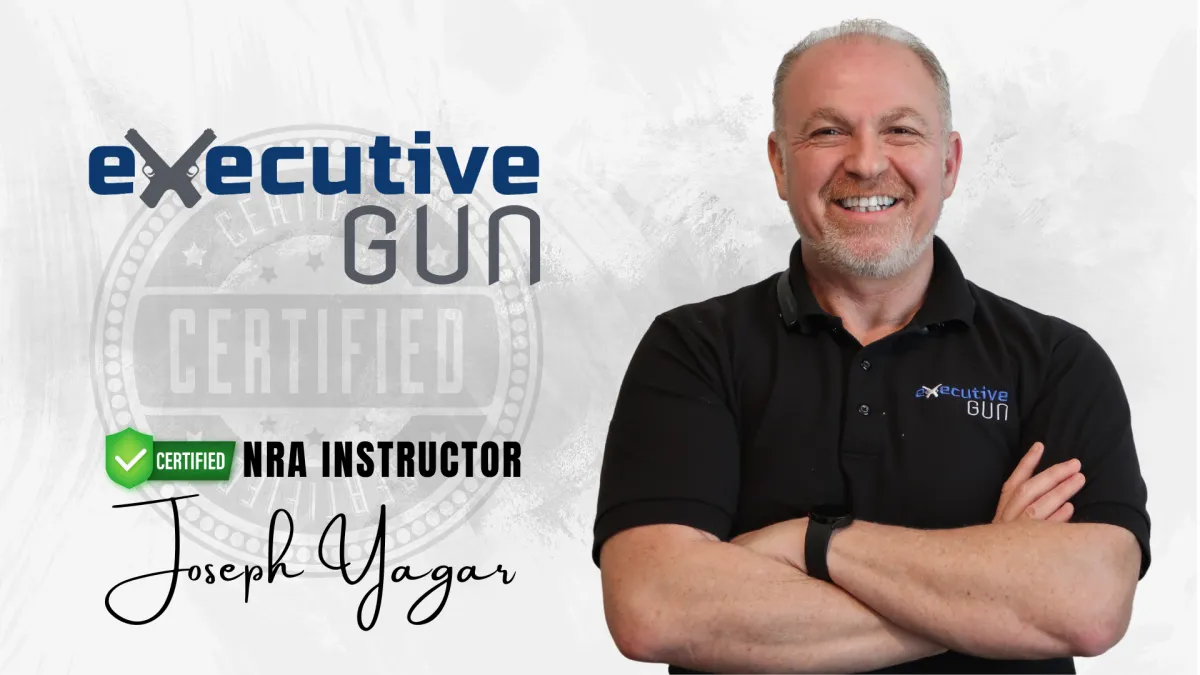

Blog
Tips, Training and News From Executive Gun

Manual Safety | 5 Things To Consider When Buying a Self-Defense Pistol
One of the most common questions I get asked by new gun owners is, “Should I have a manual safety on my self-defense pistol?”
I know there are hardliners in the gun community who would cringe at the thought of a manual safety. Don’t base your decision on their opinion.
This is an ongoing debate in the gun community. So, today, I’ll share the pros and cons of a manual safety and how to make the right decision for yourself.
Now, pros and cons doesn’t mean right or wrong. So, whatever decision you end up making, once you’re better informed, of course, is fine. I’d rather see you carrying a firearm with a manual safety than not at all.

A manual safety is simply a button or lever on your firearm. In a semi-automatic pistol, it is usually located on the slide above the grip. Revolvers don’t usually have them.
The purpose of a manual safety, when engaged, is to disable the firearm from discharging if the trigger is pulled. Like any mechanical device, it can fail when you need it most. However, with today’s high-quality guns, it is rare, but still possible.
Also, if you had to defend yourself, disengaging a manual safety is an extra step you must subconsciously perform to make sure you can fire your gun.
Under the extreme pressure of reacting to a violent attack, there is no time to think. Getting your gun out and pulling the trigger is intuitive. Disengaging the manual safety isn’t. That, however, may be remedied with proper training or simply leaving the safety in the off position.

Some manual safeties are designed to be bulky, stiff, too small, difficult to disengage swiftly, or may accidentally engage when you don’t want them to. So, if you choose to buy a gun with a manual safety, make sure you understand how it works and that you can easily operate its design.
When I bought my first Concealed Carry pistol, it had a manual safety. I kept it engaged at all times. I understood the pros and cons and decided that a manual safety would make me more comfortable carrying a firearm sooner rather than later.
I trained every day to disengage the safety immediately when putting the firearm into action so that I could do it without thought. And, having trained so much with my firearm, my safety did break once, and it had to be replaced. Thankfully, I had a spare firearm to carry in the meantime.
Despite all the practice, I must admit that occasionally, when my instructor had me perform some drills under pressure, I failed to disengage the safety.
That pressure pales by comparison to the pressure of a real violent attack.
It made me realize that if that could happen when I am shooting at paper targets, it can become a real problem if I had to defend myself for real, and I forgot to disengage it.
That was the turning point for me. After a couple of these incidents, I kept my safety disengaged and bought another gun without a manual safety.
Now that my comfort level, confidence, and experience have increased, I feel completely comfortable carrying without a manual safety.
Granted, I probably practice and train a lot more than the average gun owner so I can work through these mental blocks and mistakes a bit faster.
But you can too if you understand the following:

1. The best safety, in my opinion, is keeping your finger off the trigger. If the trigger is not pulled, the gun will not fire by itself.
2. Keeping the firearm in a good holster that covers the trigger in a hard material, like Kydex, or stiff leather, for example, is a form of safety. Even when not carrying it on your person, and when storing it in a safe.
3. Some guns come with other visible safeties. For example, a grip safety. This safety is located in the back of the grip. That is a safety that is disengaged as soon as you grip the gun properly for the purpose of shooting. If it isn’t pressed in firmly the trigger cannot be pulled.
4. Most guns these days have internal safeties that prevent the firearm from discharging if it is dropped, or the trigger gets bumped accidentally.
5. There is a misconception that a manual safety may prevent a curious child from accidentally discharging the gun. That may be true sometimes, but curious kids will tinker with every button and lever and eventually get it. Unfortunately, there have been enough incidents to prove that.

If there is any chance that a child may have access to your gun, store it in a safe or locked compartment where the chances of access for the child are zero.
Make sure to check your local safe storage laws, especially if there are minors living with you or may have access to your home.
We all have to start somewhere, especially with a potentially dangerous instrument like a firearm. That’s the reason manual safeties were designed. To be like training wheels on a bike. So, if owning and or carrying a firearm with a manual safety, encourages you to own, train, and carry a firearm for self-defense, then go for it.
I’d rather have you carry a firearm with a manual safety and train accordingly than hold off on carrying a gun, staying vulnerable, and losing that edge because you’re afraid to carry without one.
Train hard, often, and safely, and I’ll see you at the range.
Subscribe to Executive Gun Blog and Get Notified When We Post a New Update, Training Trick Or Second Amendment News...

Get Your Florida Concealed Carry Permit With Executive Gun Today!!
Start Watching Our Free Florida Concealed Carry Masterclass™ Now and Get Certified Same day...
All rights Reserved. Copyright 2025 Executive Gun


